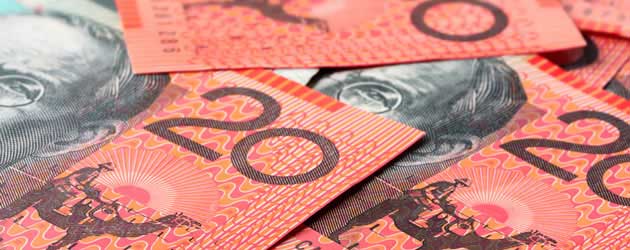
It was reported earlier this morning that Australian Gross Domestic Product grew by 0.6% in the fourth quarter of 2012.
Australian GDP printed pretty much inline with analysts’ expectations – apart from the annualised figure, which swelled by 0.1% due to an upward revision to third quarter growth from 0.6% to 0.7%. During 2012 Australian economic output expanded by 3.1%.
The Australian Dollar improved by 0.2 cents against the Pound (GBP/AUD) within 15 minutes of the release. Although the report showed a -1.0% fall in Business Investment Spending, it featured a decade-defying 3.5% gain in GDP-per-hour Productivity. Overall, the statement was interpreted as moderately strong for the ‘Aussie’.
Risk sentiment picked up yesterday in response to a slew of optimistic data spanning from Europe, to the United States, to China: The German Service Sector outperformed analysts’ expectations, printing at 54.7 for February; the Eurozone Retail Sales index also outpaced predictions, rebounding from -0.8% to +1.2% during January; the US ISM Non-Manufacturing Composite posted a robust score of 56.0 in February; and China announced its largest spending increases, aimed at sustaining economic growth, since 2008.
New York’s Dow Jones Share Index hit a new record high of 14,286 yesterday, beating October 2007’s peak of 14,198, as investor optimism trickled through the US stock market. The news is expected to have a sustained positive impact on market confidence as the headline reaches traders and households, lifting spirits and raising spending levels.
The string of encouraging global data sent the risk-sensitive Australian Dollar higher by around a cent against the Pound, taking GBP/AUD down to 1.4752 by the end of the European trading session.
Sterling had originally rallied by around 0.7 cents, to a daily high of 1.4848 (GBP/AUD), in response to a stronger-than-anticipated UK Service Sector print of 51.8, which greatly reduced the possibility that Britain will be plunged into an unprecedented triple-dip recession by the end of the first quarter. Chris Williamson of Markit Economics, who compiled the report, said:
“The PMI’s suggest that the economy will have grown by 0.1% in the first quarter, barely making up for any of the -0.3% decline seen in the final quarter of last year”.
With traders relieved rather than excited by the result, Sterling was unable to hold onto its initial gains and the UK currency will remain susceptible to further declines later on in the week as the Bank of England will announce their asset purchasing target for March. Three members of the Monetary Policy Committee, including Governor Mervyn King, voted for a further £25 billion of quantitative easing measures last time out, and if more join them in the dove camp then Sterling could begin to slide again against the Australian Dollar.

Comments are closed.